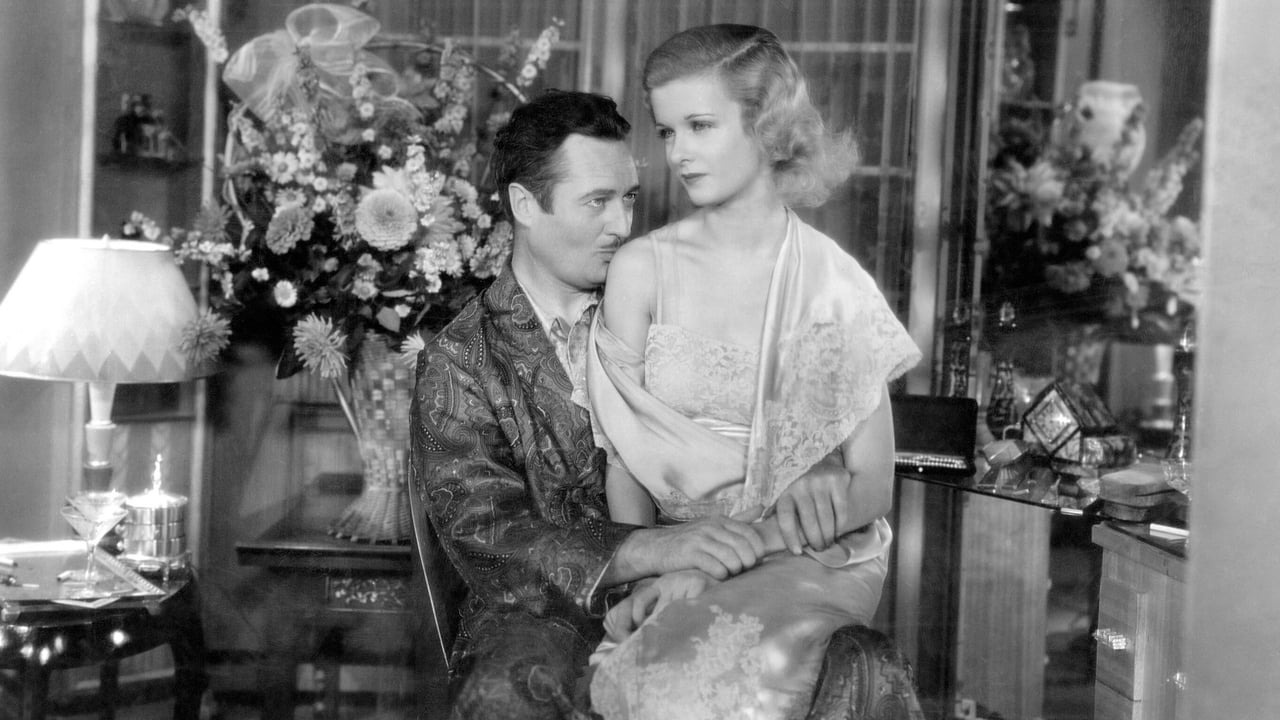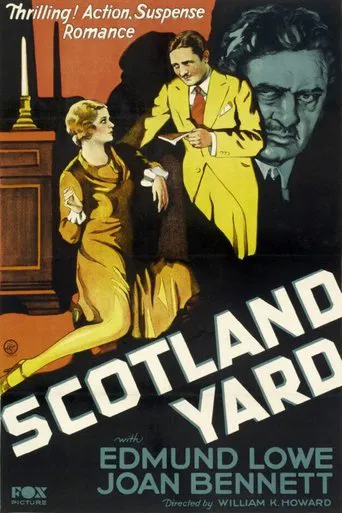

Don't let the title of this early talkie fool you. It has little to do with Scotland Yard and more to do with post war issues that involve mistaken identity and the desire for a new life for the larger part of the two roles that veteran actor Edmund Lowe plays. He's both a notorious bank robber and a notorious drunken banker, involved in a horrible marriage to the beautiful but unhappy Joan Bennett. Believing her husband whom she despised to be dead, she becomes a flamboyant party girl out only for happiness, and is upset to find out that her husband is convalescing in a hospital, having had his face restored after being almost blown up in battle. But, it's not him; it's the bank robber, having stolen Bennett's locket after hiding out and getting medical attention from Bennett while her husband watched from a drunken stupor. Will circumstances change their fate, or will the truth damage any chance of happiness that they seek?Yes indeed, it's a convoluted, practically unbelievable story, with more holes than a World War I trench sand bag. The actors speak practically monotone and the camera barely moves. But surprisingly, I found myself enjoying this more than it was worthy of being enjoyed. Donald Crisp plays the pal of the bank thief, threatening to expose him. Perhaps it's the fact that this is so convoluted that makes it fun; With each step that the plot takes, it just manages to become more endearing, especially when Lowe teases the unknowing Crisp under his breath to drop subtle hints of his identity. Bennett reminds me of a young Carole Lombard here, playing the type of role that her own sister Constance Bennett would inhabit through much of the 1930's. Lowe seems to be putting every effort to establish a memorable characterization. This is the type of film that requires much suspense of belief. If you are able to, you might come out liking it in spite of some serious flaws.
... View MoreEdmund Lowe, in 1930, was Fox's answer to Paramount's William Powell. He didn't have Powell's acting depth but his insouciant personality served him in some quite varied roles. Like this one where he plays the dual role of an effete husband and a tough thief. His beautiful co-star Joan Bennett, "Scotland Yard" being the first film of her new Fox contract, plays the exotically named Xandra, Lady Lasher who is less than impressed with her boorish husband, Sir John. Into their "yawnful" existence comes Dakin Barrolles, a particularly rough looking customer who finds their houseboat the perfect place to evade the police. Of course Lasher, after forcing his wife to attend the escapee almost collapses with shock!!Barrolles, along with his partner (Donald Crisp) make their escape through enlistment in World War 1 but by the miraculous magic of Hollywood coincidence, at the War's end, when Dakin is in hospital with terrible facial injuries, the surgeon discovers a little locket that the thief had stolen with Sir John's picture in it and ........"Scotland Yard" is very conspicuous by it's absence - the majority of the story being Xandra's realisation that the horrible husband of the past is somehow a new man and she is more than willing to be re-romanced. Suddenly into his now ordered life comes his old friend and Dakin is more than willing to fall into his old crooked ways. With Crisp posing as a German doctor and flanked by some increasingly suspicious detectives he soon realises that the police are on to them - the only problem is Crisp doesn't believe him!!The New York Times thought Joan was "charming and efficient" but apart from being co-starred with Spencer Tracy most of her early Fox films were lack lustre and after a dismal western with the equally out of place James Dunn as a co-star, she and Fox called it quits!!
... View MoreFleeing a botched bank robbery, veteran criminal Dakin Barrolles has a chance encounter with drunken banker Sir John Lasher and his beautiful wife Xandra. Barrolles is fascinated by Xandra and steals a locket with the couple's picture. World War I has just broken out and Barrolles and his accomplice Charles Fox decide to escape the police by joining the army. Barrolles is caught in a land mine and his face is blown away. A brilliant plastic surgeon, assuming the locket Barrolles carries shows a portrait of his real face, gives him the face of Sir John who has also joined the army and is missing in action. Barrolles, now believed to be Sir John, goes along with the masquerade in order to avoid further trouble with Scotland Yard which is still on his trail. Xandra, who is not sorry that her dissolute husband has vanished, comes to the hospital to bring "Sir John" home. Back in London, Barrolles is tempted to use his position as Sir John to rob the bank but he and Xandra-charmed by the uncharacteristic tenderness of her spouse-fall in love. Barrolles is caught between his love for Xandra and the urging of his old partner Fox to return to crime.In spite of the title, Scotland Yard plays only a minor role in this completely unbelievable melodrama that is rife with plot holes and contrivances. A prime example of the latter is the plastic surgeon's willingness to play along with the ruse even after Barrolles has told him who he really is, accepting the criminal's word that he will not take advantage of Xandra and will leave her before they get to London. In the early scenes Edmund Lowe adopts a false nose, a moustache and a low growl to play Barrolles and a silly ass Englishman accent for Sir John. Later in the film Lowe is pretty much his usual movie self; a likeable, slightly shady scamp with a sense of honor. He is more convincing in a dual role he did just a few years later in THE GREAT IMPERSONATION. Joan Bennett looks lovely but has a very dull role and in the supporting cast only Donald Crisp stands out unless you count the unintentionally funny performance of Betty Leonard as a French nurse with a very fake accent. William K. Howard, a veteran of silent movies, still had not found his footing in the sound era and much of the film has that static, stilted quality that frequently mars movies made from 1929-30. Howard's direction picks up a bit in the climatic scenes but he's still a long way from his subsequent TRIAL OF VIVIENNE WARE and THE POWER AND THE GLORY
... View More